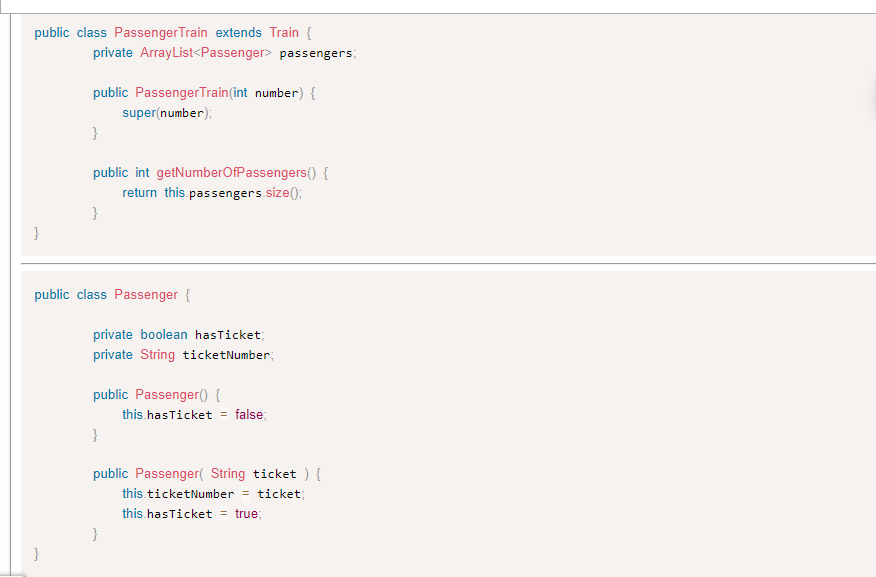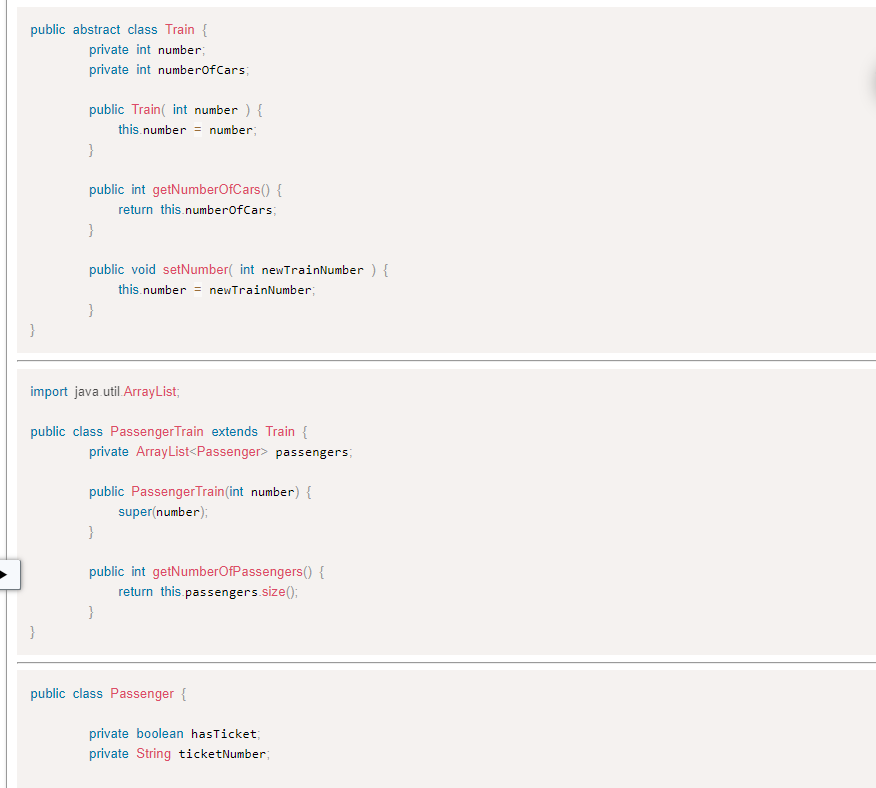Home /
Expert Answers /
Computer Science /
help-please-use-violetuml-to-draw-a-uml-class-diagram-that-shows-the-relationship-among-the-classe-pa308
(Solved): help please Use VioletUML to draw a UML class diagram that shows the relationship among the classe ...

Use VioletUML to draw a UML class diagram that shows the relationship among the classes below. Note that, as in any program design, there may be multiple choices for relationships between some classes. In such a case, select only the most 1. Draw your UML diagram 2. Submit only the UML diagram file, named with your UTSA ID (abc123.png an image) To submit your response: 1. Save your UML diagram as an image file. - In VioletUML, to save as an image, go to File > Export > Image. This will save as a .png 2. Name that file abc123.png (where abc123 is your UTSA ID) 3. Upload the image file only to Blackboard here. *NOTE: submissions which are not image files will receive 0 credit import java util.ArrayList; public class Station \{ private ArrayList Train trains; public Station() \{ this.trains = new ArrayList Train ; \} public ArrayList Train getTrains return this.trains; \} \}
public abstract class Train \{ private int number; private int numberofCars; public Train( int number ) \{ this.number = number; \} public int getNumberOfCars() \{ return this numberofCars; public void setNumber( int newTrainNumber ) \{ this.number = newTrainNumber; \} import java util.ArrayList; public class PassengerTrain extends Train \{ private ArrayList Passenger passengers; public PassengerTrain(int number) \{ super(number); \} public int getNumberOfPassengers() \{ return this passengers.size(); \} \} public class Passenger \{ private boolean hasTicket; private String ticketNumber;
public class PassengerTrain extends Train \{ private ArrayList Passenger> passengers; public PassengerTrain(int number) \{ super(number); public int getNumberOfPassengers() \{ return this.passengers.size(); \} public class Passenger \{ private boolean hasticket; private String ticketNumber: public Passenger() \{ this.hasTicket false; \} public Passenger( String ticket ) \{ this.ticketNumber ticket ; this.hasTicket true; \} \}
Expert Answer
First, we have one class: Station. It has one attribute: trains, which is an ArrayList of Train objects. It also has one method: getTrains(), which returns the trains attribute.So our Station class will have one association with the Train class, with the multiplicity of 0..* on the Station end and 1 on the Train end. The Station class will also have one method: getTrains(), which returns an ArrayList of Train objects.Here's what the UML class diagram should look like: ___________________________________| Station ||-----------------------------------|| - trains: ArrayList

